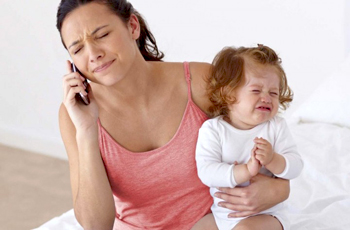New York, Apr 26: A financially weak pregnant woman's worries about the arrival and care of her little one could contribute to the birth of a smaller, medically vulnerable baby, a new study suggests.
 Researchers from Ohio State University in the US, studied about 138 pregnant women who filled out questionnaires to assess financial strain, depressive symptoms, pregnancy- specific distress, perceived stress and general anxiety.
Researchers from Ohio State University in the US, studied about 138 pregnant women who filled out questionnaires to assess financial strain, depressive symptoms, pregnancy- specific distress, perceived stress and general anxiety.
Mothers in the racially diverse study group were between five and 31 weeks pregnant and 29 years old on average at the time of the assessment.
The study, which was primarily designed to evaluate flu vaccine effectiveness, ran from 2013 to 2015.
After the participants' babies were born, researchers reviewed medical records to compare birth weight against mothers' questionnaire responses during pregnancy.
Researchers knew from previous studies that pregnant mothers who are socioeconomically disadvantaged have a higher likelihood of having smaller babies and worse birth outcomes.
They wanted to learn was whether specific factors could be driving that connection - factors that could lead to positive interventions for women at risk of delivering low- birth-weight babies.
Statistical models designed to identify those drivers landed on one statistically significant factor: pregnancy- specific distress.
Researchers found that a financially strapped pregnant woman's worries about the arrival and care of her little one could contribute to birth of a smaller, medically vulnerable infant.
"It is important to understand the factors that make it more likely for a woman with lower socioeconomic conditions to have a baby at higher risk of complications and death," said Amanda Mitchell of Ohio State University. The study was published in the journal Archives of Women's Mental Health.





Comments
Add new comment